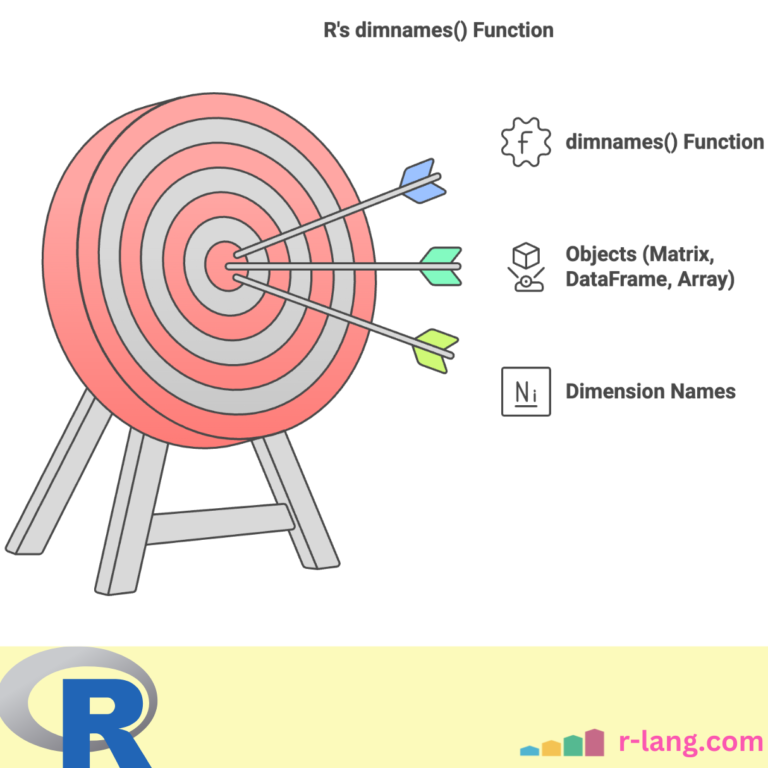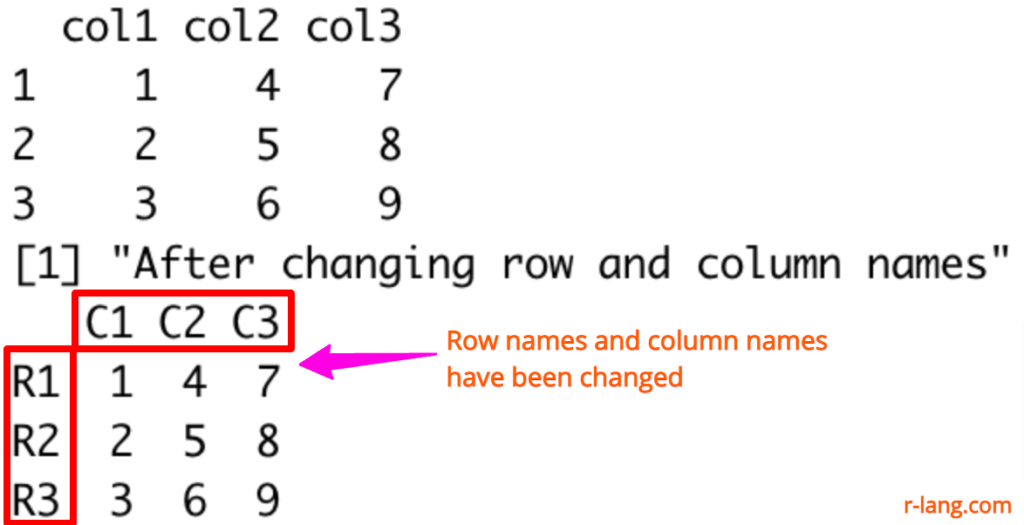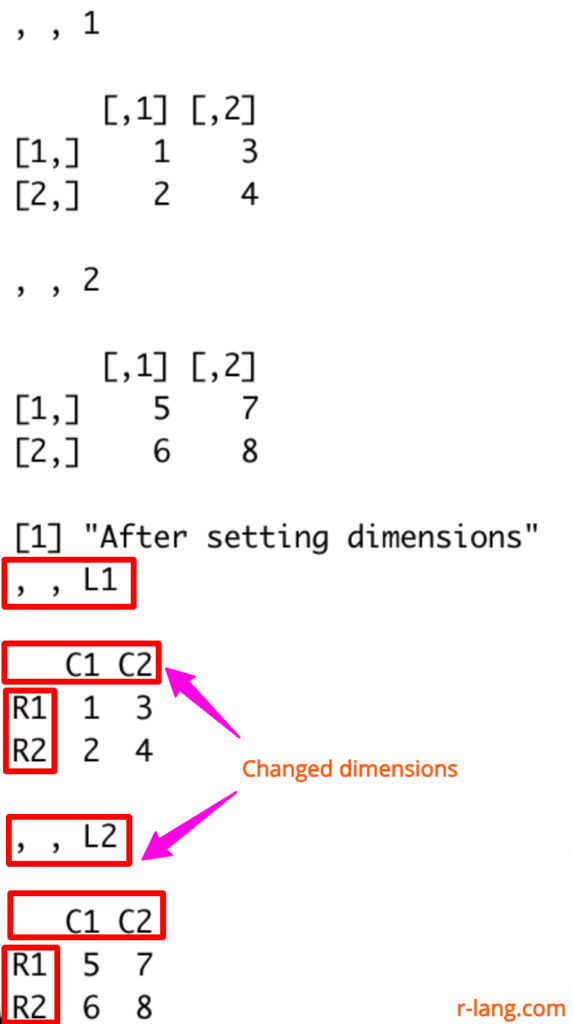Dimensions are the structure of the data. A matrix has two dimensions: a row and a column, while an array can have multiple dimensions.
Dimension labels are names that we can assign to a dimension. For example, for a matrix, row names are labels, and column names are also.
The dimnames() function in R is used to get or set the names of an object’s dimensions, such as a matrix, data frame, or array.
Syntax
dimnames(obj)Parameters
| Name | Value |
| obj | It is an R object. |
Setting the dimnames of the matrix
You can assign dimension names using dimnames(x) <- list(row_names, col_names). This sets the names for your object.
When setting dimension names, ensure that the length of the names matches the respective dimension of the data structure (e.g., the number of row names should match the number of rows).
Figure 1: Set the dimnames of a matrix
mat <- matrix(1:9, nrow = 3)
dimnames(mat) <- list(month.abb[1:3], month.abb[5:7])
print(mat)Output
May Jun Jul
Jan 1 4 7
Feb 2 5 8
Mar 3 6 9
Here, you can see that we assigned row names as well as column names using the dimnames() function with the help of list().
By default, indices represented row and column labels, but we changed this to month names.
Getting the dimnames of the matrix
To get the list of dimension names, use dimnames(x) (where x is your object.)
For a matrix, this list will have two elements: the first for row names and the second for column names.
mat <- matrix(1:9, nrow = 3)
dimnames(mat) <- list(month.abb[1:3], month.abb[5:7])
dimnames(mat)Output
[[1]]
[1] "Jan" "Feb" "Mar"
[[2]]
[1] "May" "Jun" "Jul"You can see that we have a list with two elements. First is row names. The second is column names.
You should use “double square brackets ([[ ]])” to access specific dimension names from the list.
Data Frame
If you use the dimnames() function with the data frame and want to get the dimensions, it will return a list of two elements: row names and column names.
df <- data.frame(
col1 = c(1, 2, 3),
col2 = c(4, 5, 6),
col3 = c(7, 8, 9)
)
dimnames(df)
Output
[[1]]
[1] "1" "2" "3"
[[2]]
[1] "col1" "col2" "col3"
From the above program, you can see that we are getting the dimension names of the data frame.
We can also set the row and column names in the data frame.
df <- data.frame( col1 = c(1, 2, 3), col2 = c(4, 5, 6), col3 = c(7, 8, 9) )
print(df)
dimnames(df) <- list(c("R1", "R2", "R3"), c("C1", "C2", "C3"))
print("After changing row and column names")
print(df)Output
Array
Arrays are different structures that can have more than two dimensions. They require a list with a length equal to the number of dimensions.
You can set the array dimensions using the “dimnames(main_arr) <- list(dim1, dim2, dim3)” syntax.
main_arr <- array(1:8, dim = c(2, 2, 2))
print(main_arr)
dim1 <- c("R1", "R2")
dim2 <- c("C1", "C2")
dim3 <- c("L1", "L2")
dimnames(main_arr) <- list(dim1, dim2, dim3)
print("After setting dimensions")
print(main_arr)Output
You can see from the above output screenshot that we assigned dim1, dim2, and dim3 to the array, as highlighted in the image.

Krunal Lathiya is a seasoned Computer Science expert with over eight years in the tech industry. He boasts deep knowledge in Data Science and Machine Learning. Versed in Python, JavaScript, PHP, R, and Golang. Skilled in frameworks like Angular and React and platforms such as Node.js. His expertise spans both front-end and back-end development. His proficiency in the Python language stands as a testament to his versatility and commitment to the craft.




